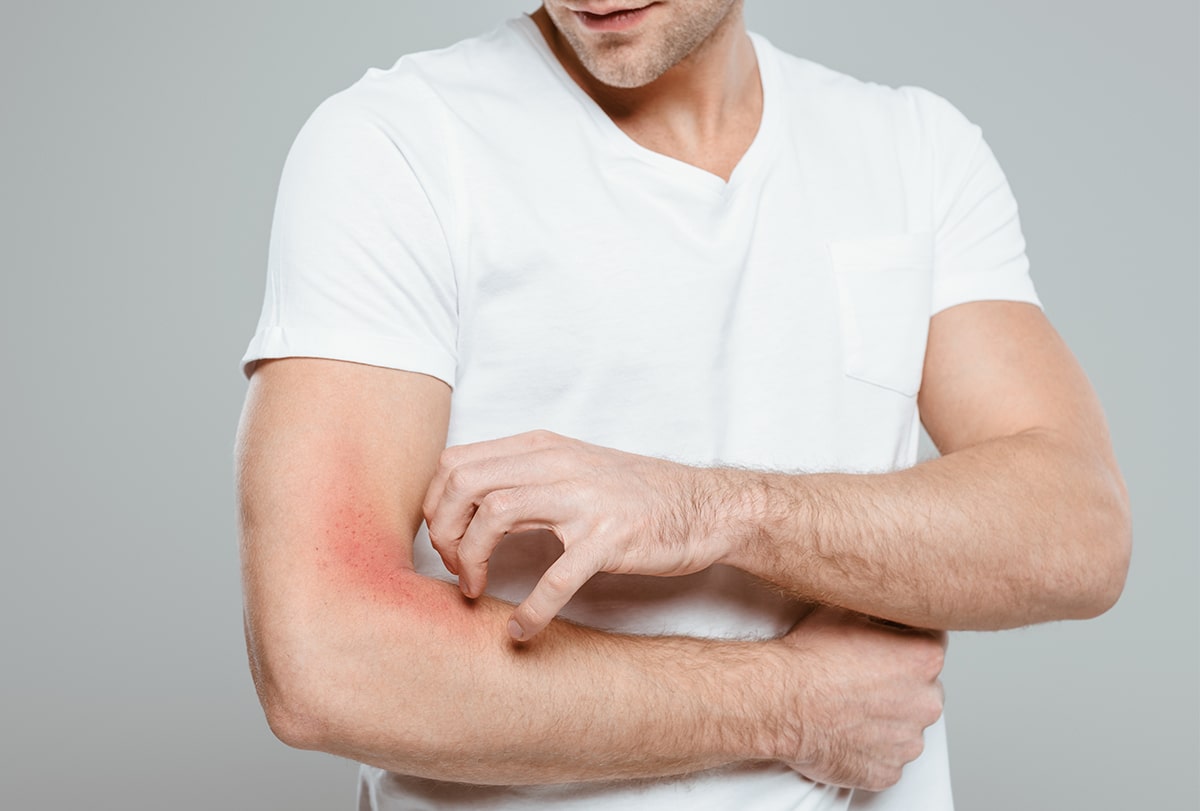Candidiasis is the name of a common fungal infection caused by a type of yeast known as Candida. This yeast can be normally found on the skin’s surface and the mouth, nose, vagina, etc. (1)

Candidiasis occurs when there is an overgrowth of this organism in the body or if it enters into the bloodstream and internal organs. (2)
Who Gets Candidiasis?
Candida is usually a part of the body’s natural flora and can be found on the skin. However, certain conditions along with lowered immunity can encourage this yeast to overgrow and cause fungal infections.
Types of Candidiasis
Here are some common types of candidiasis that can occur in the body:
- Thrush: Oral or vaginal thrush is a common fungal infection caused by Candida albicans.
- Esophagitis: Yeast infections that affect the esophagus and cause digestive issues are referred to as esophagitis. This usually occurs due to an oral fungal infection. (3)(4)
- Cutaneous (skin) candidiasis: Yeast infections that occur in the skin folds are a common occurrence. The armpits and skin behind the knees, between the toes, etc., tend to get sweaty often and become a prime breeding ground for yeast. (5)
- Vaginal yeast infections: Vaginal yeast infections are also common among women. (6)
- Deep candidiasis: This condition occurs when candidiasis spreads to the bloodstream and internal organs. It is a rare condition that can cause sepsis and even death. (7)
Causes of Candidiasis
The main culprit behind candidiasis infections is usually Candida albicans, a type of yeast that is commonly present on the skin’s surface. However, other types of yeast such as Candida krusei and Candida glabrata can cause candidiasis as well. (8)
Lowered immunity due to diabetes, immune disorders, chemotherapy, etc., is a major cause of candidiasis.
Symptoms of Candidiasis

Here are some common symptoms of candidiasis infections:
- Itching and irritation in the affected area
- Pinkish red rash
- Vaginal thrush, which can cause a cloudy white discharge from the vagina
- Oral thrush, which can cause a white coating on the tongue and mouth and pain while eating
- Fatigue
- Bloating and digestive issues such as diarrhea or constipation
Treatment for Candida
The treatment for candidiasis varies, depending on the area affected:
- Thrush – Thrush is usually treated with antimicrobial mouthwashes (such as liquid nystatin), clotrimazole lozenges that dissolve in the mouth, or oral antifungal medicines such as fluconazole. (9)
- Esophagitis – Candida esophagitis is treated with an oral antifungal medicine such as fluconazole, itraconazole, or voriconazole. (10)
- Cutaneous candidiasis – Skin infections caused by Candida are the most common types of candidiasis. It is important to keep the area clean and dry for proper treatment. Treatment involves the use of topical antifungal formulations such as ointments and powders. In severe cases, oral antifungal medicines are also prescribed.
- Vaginal yeast infections – Vaginal candidiasis or vaginal thrush is treated with vaginal antifungal creams and suppositories or oral antifungal medicines. (11)
- Deep candidiasis – Deep candidiasis may require the use of intravenous antifungal drugs such as voriconazole or fluconazole. In some cases, doctors may administer caspofungin or micafungin intravenously instead.
Diagnosis of Candidiasis
Candidiasis can be diagnosed by a doctor in the following ways:
- Oftentimes, doctors diagnose skin, oral, and vaginal yeast infections simply by observing the rash and asking about your symptoms.
- In some cases, they may ask you to undergo a blood test or swab test to confirm the diagnosis.
- Esophagitis caused by Candida is diagnosed through a procedure called endoscopy. Endoscopy involves the insertion of a tiny camera through a flexible tube into your food pipe. This allows the doctor to observe your esophagus and also collect a swab sample for testing. (12)
Risk Factors and Complications
The following groups are more prone to develop candidiasis than others:
- People who have undergone organ transplants
- People with diabetes with very high uncontrolled blood sugar levels
- People with a weakened immune system due to AIDS or other immunosuppressive disorders
Although yeast infections are usually minor and do not cause any major problems, certain cases of candidiasis can lead to serious and life-threatening complications. These include: (13)
- Swelling or inflammation in vital organs, such as nephritis or meningitis
- Abscess formation under the skin
- Organ failure or transplant rejections in patients
When to See a Doctor
You can try over-the-counter antifungal ointments for relief from skin infections. However, if your condition does not seem to improve, you can consult a doctor for proper treatment.
What you may ask your doctor
- How serious is this condition?
- What can I do to prevent these infections?
- What medications do I need to take?
What your doctor may ask you
- How long have you had these symptoms?
- Have you taken any antibiotics recently?
- Have you ever had candidiasis before?
- Are you sexually active?
Final Word
Candidiasis is a common infection and can be annoying but is usually not serious.
Preventive measures such as maintaining proper hygiene, controlling your blood sugar level if you have diabetes, and dietary changes can help get rid of minor infections. Consult your doctor for the right treatment plan.
Continue Reading
6 Home Remedies for Candida Overgrowth

